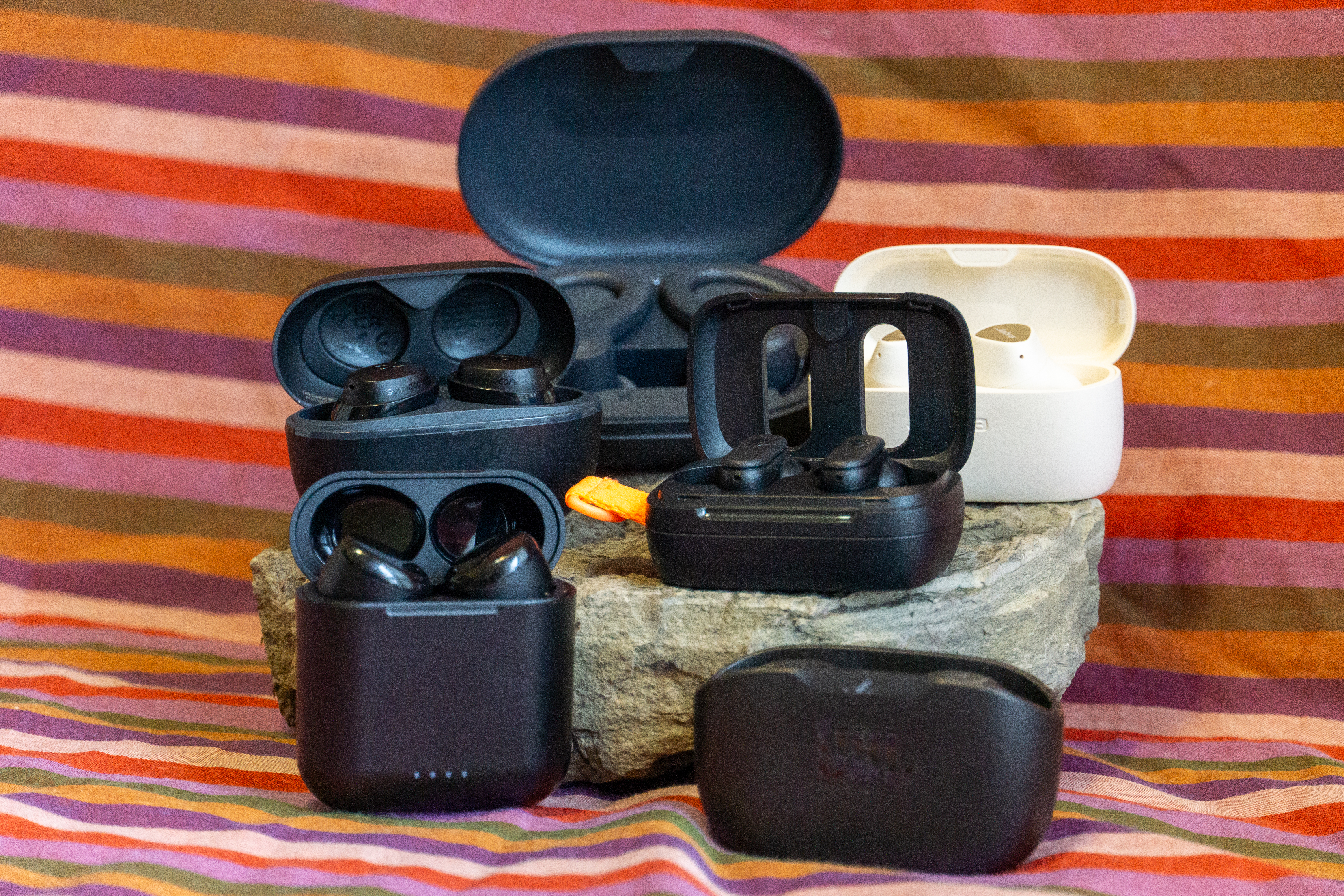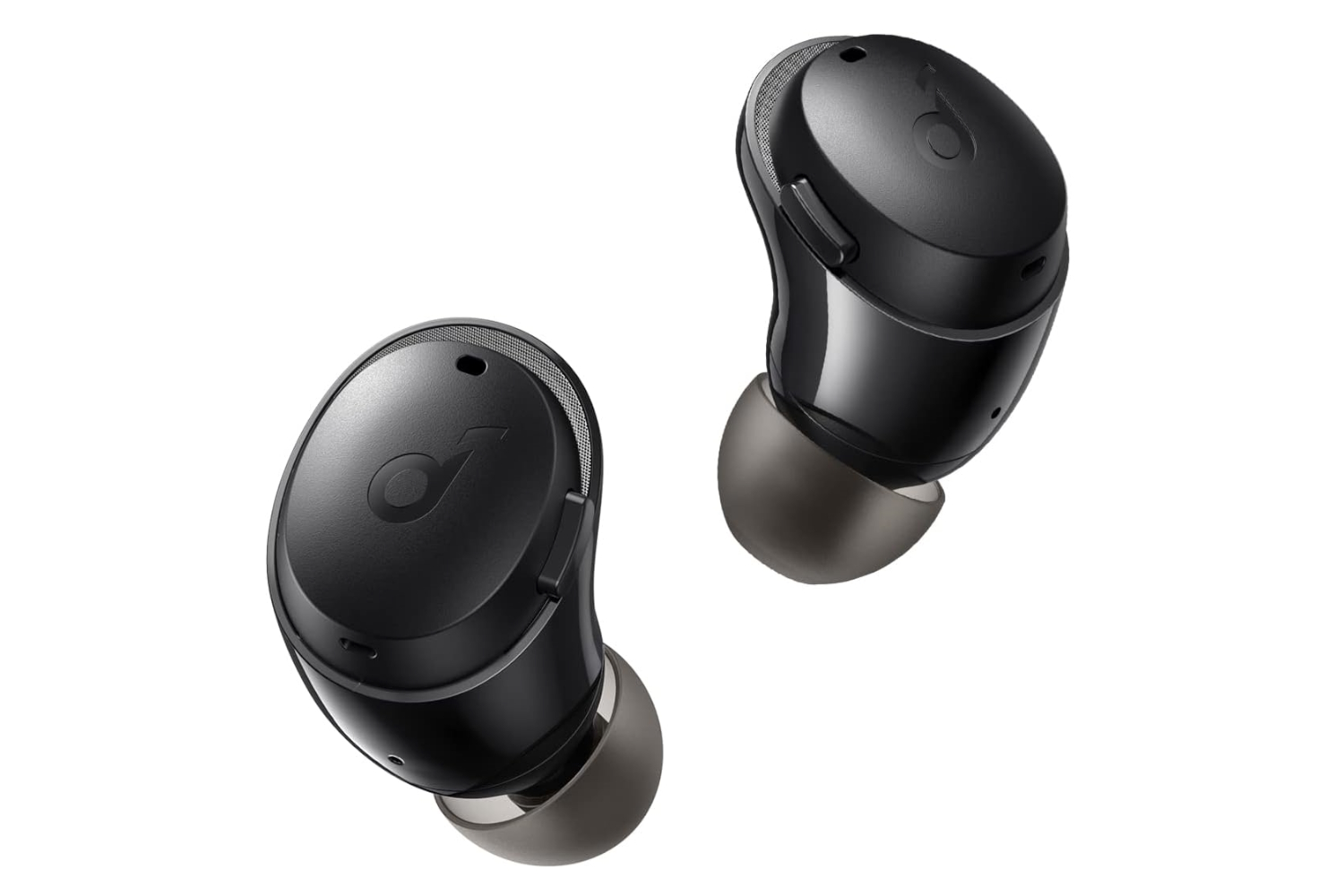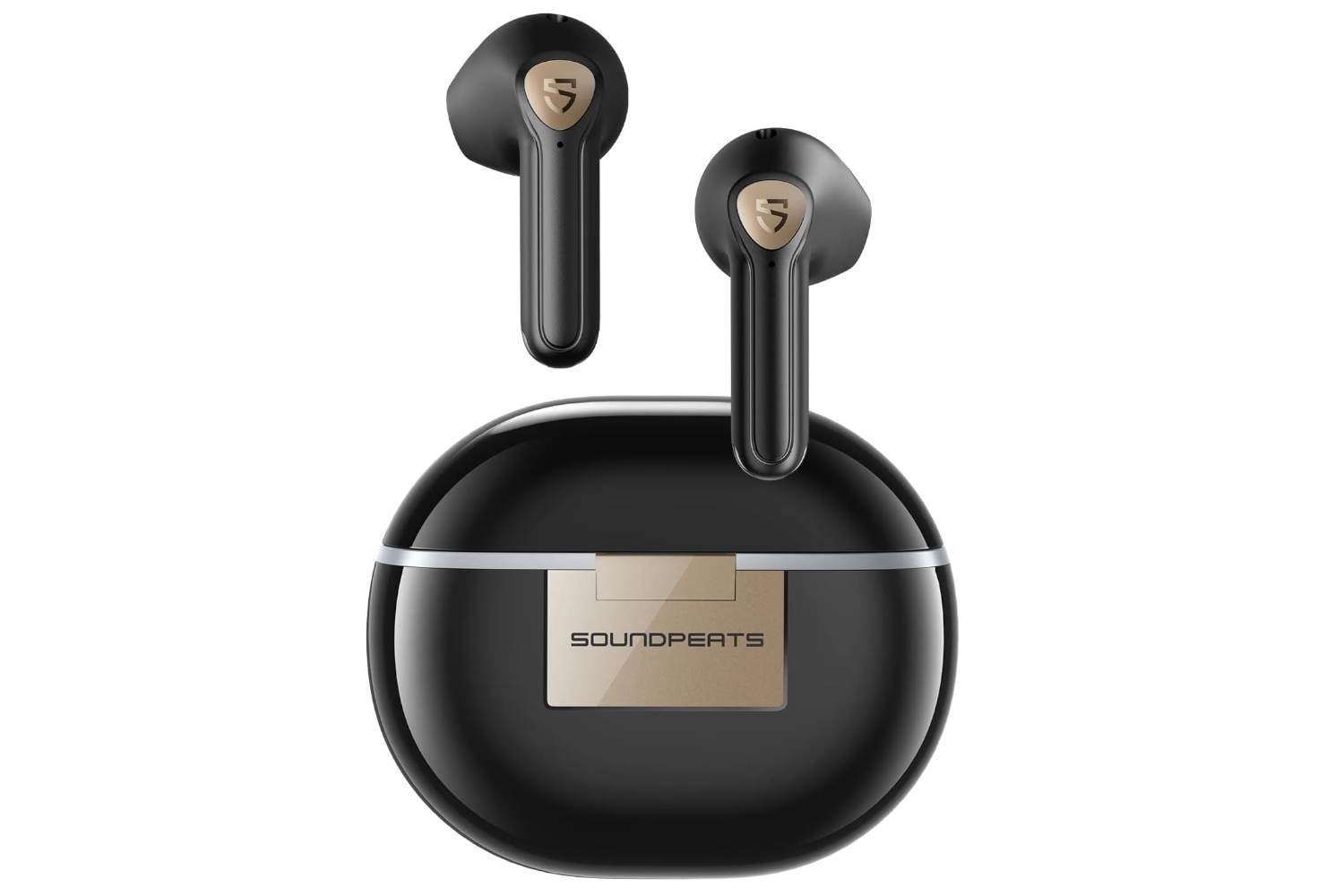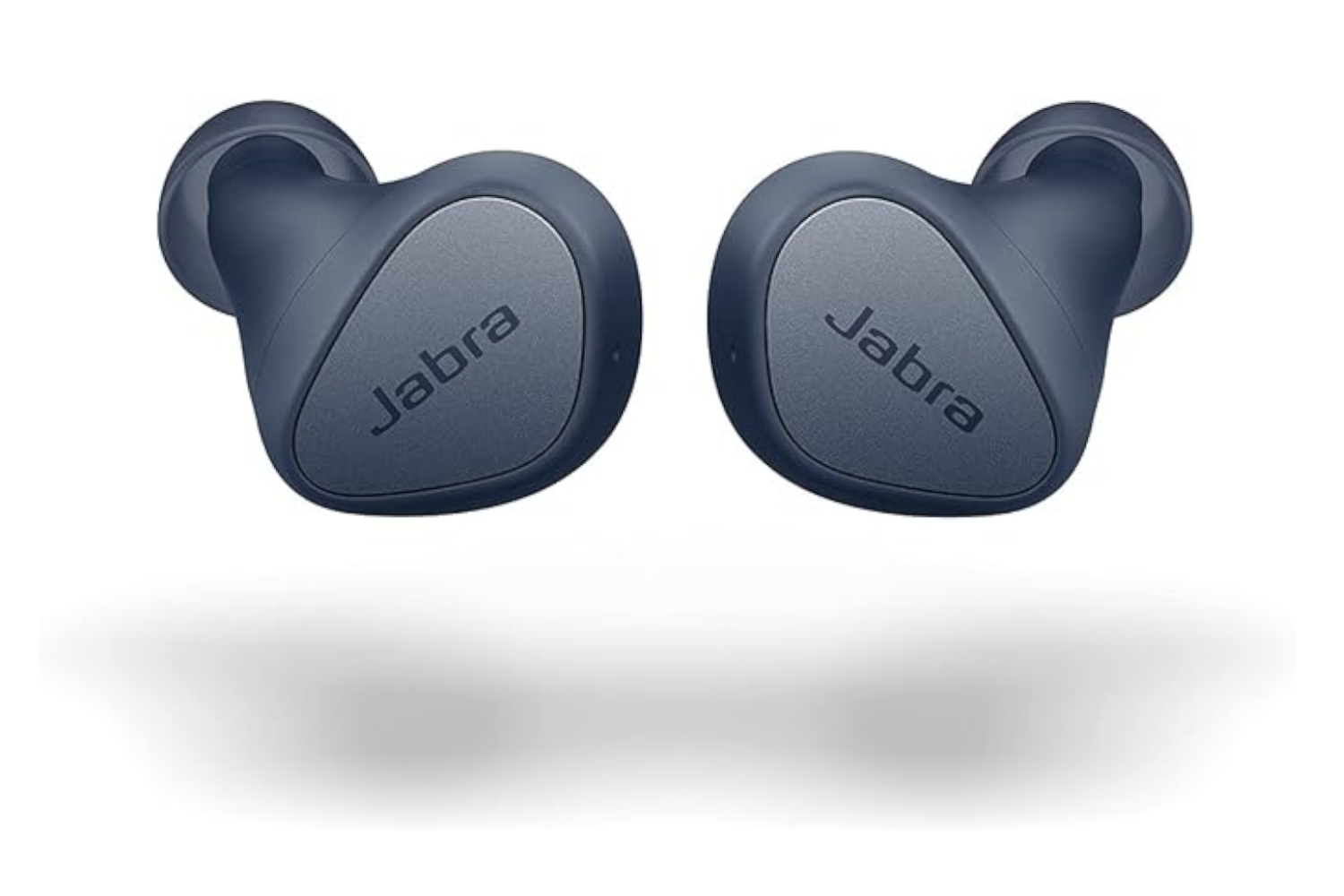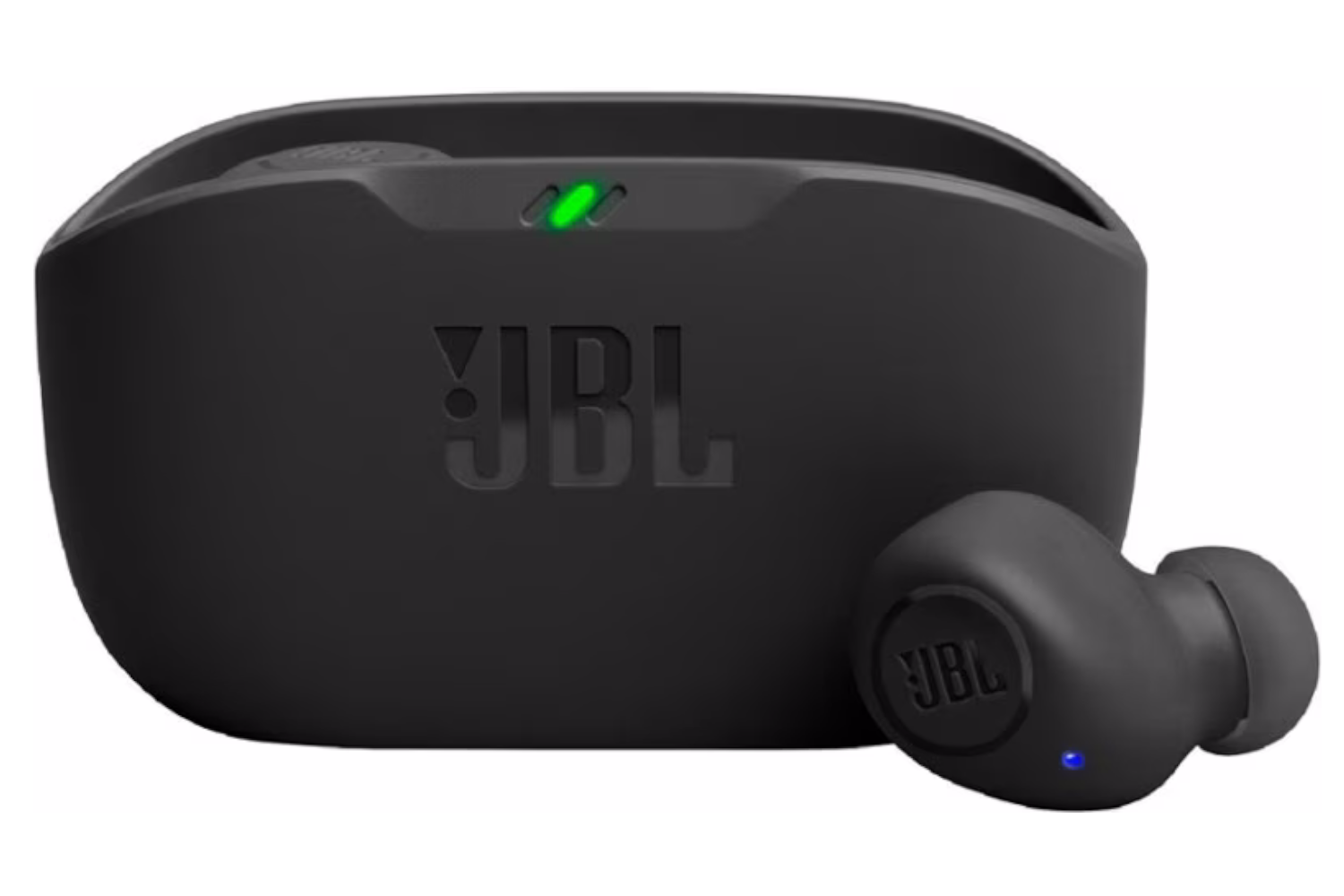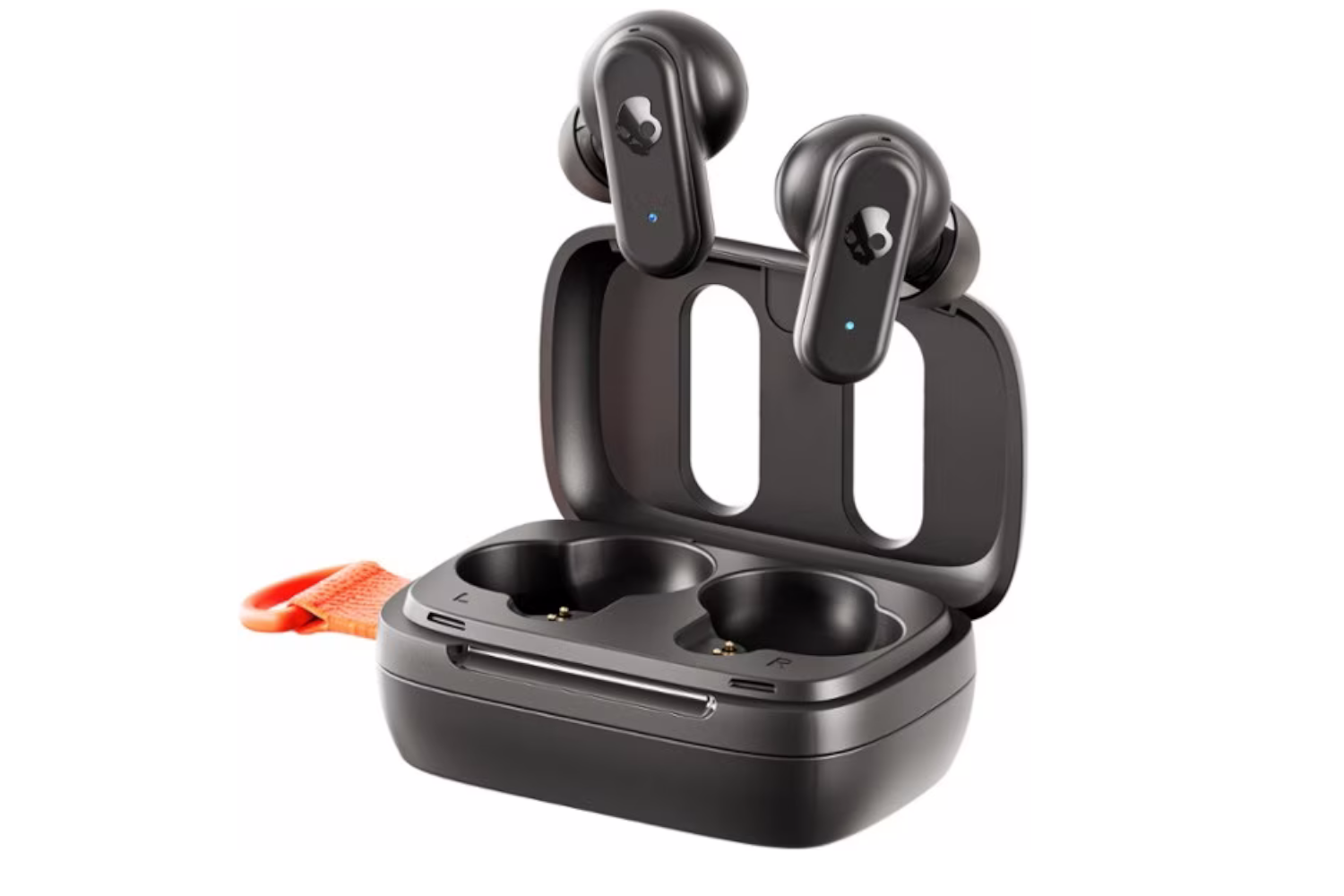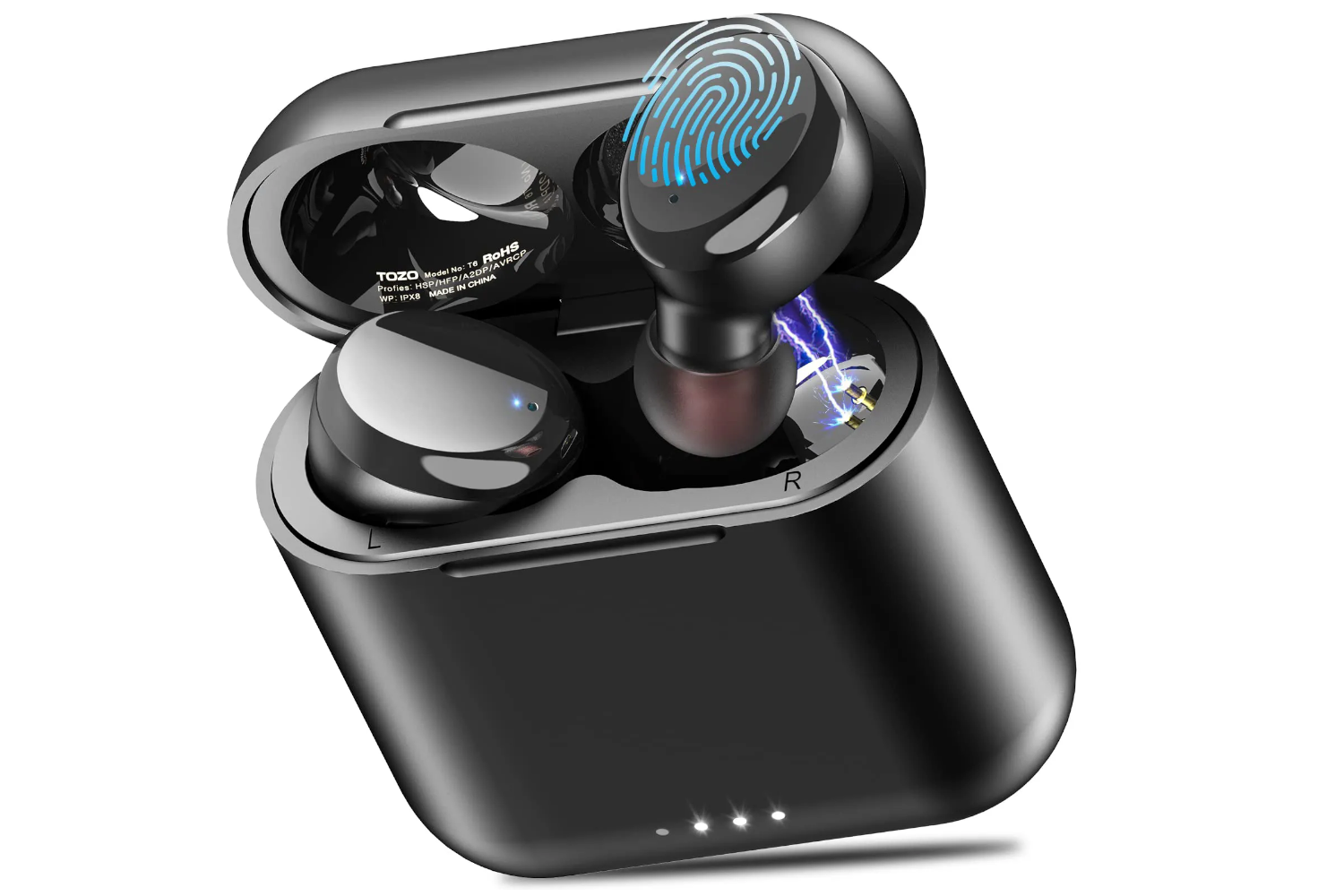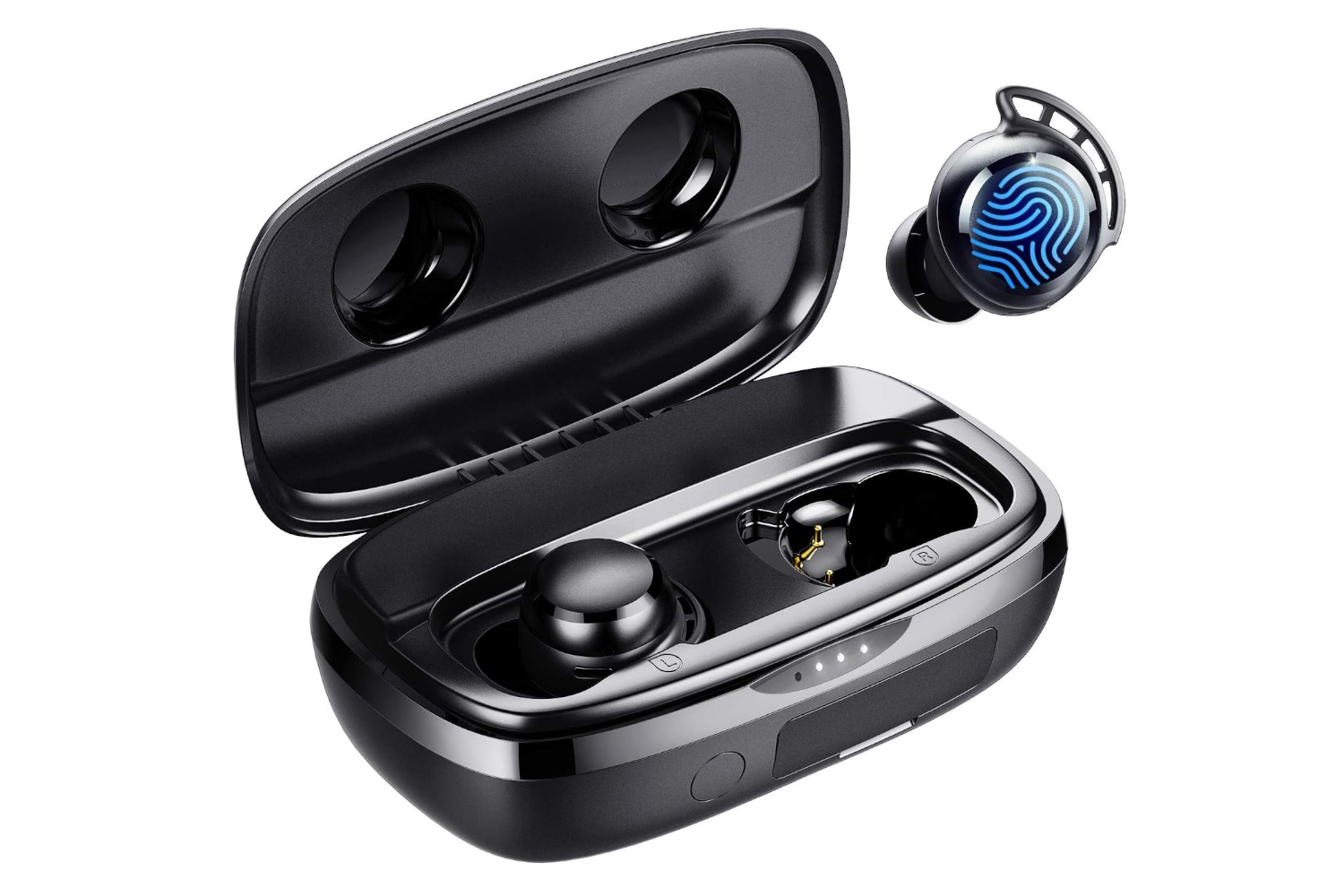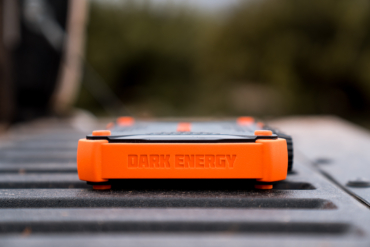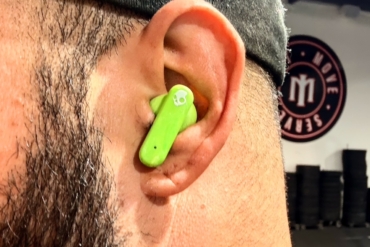We like to think we’re fairly easy on our electronics. But when it comes to reviews, there’s a certain perverse pleasure in seeing just how much abuse a piece of gear can take. Especially cheaper items, which can be pushed to the limits without sweating your wallet.
And speaking of sweat and punishment, perhaps no tool in our kits has a more thankless job than earbuds. Rather than suffering in silence, we expect Bluetooth earbuds to perform on command. Whether it’s phone calls and voice chats for work, a bicycle session, or a gym trip, we rely on these little marvels to keep the world out and our sanity in.
And with so many options available, we could think of no better way to honor these lifesavers than with an old-fashioned budget battle.
Editor’s Note: For our December 8, 2025, update, we added our new favorite value earbuds, the Skullcandy Ecobuds.
The Best Wireless Earbuds Under $50 of 2025
Anker Soundcore Life A3i Earbuds
-
Sound
8.0
-
Battery Life
8.5
-
Durability
7.0
-
Value
8.0
- Battery life: 9 hours per charge, 36 hours total with case
- Charging case: Yes
- Weight: 4.5 g per bud, 48 g total with case
- Microphone: Yes, 4 mics
- Waterproof rating: IPX5
Pros
- Active noise cancelling works, and not often included at this price point
- 10 mm drivers move a good amount of sound
- Lightweight and little ear-fatigue
- Soundcore app allows for different EQ profiles
Cons
- No wireless charging through the case
- Button-press menus a bit complicated
Skullcandy EcoBuds
-
Sound
7.0
-
Battery Life
6.8
-
Durability
6.5
-
Value
8.0
- Battery life: Up to 8 hours
- Charging case included: No
- Weight: 40 g
- Microphone: Yes
- Waterproof rating: IPX4
Pros
- Excellent sound for the price
- Good passive noise cancellation
- Rapid charging
- Environmentally friendly materials
- Water-resistant
Cons
- No battery dock
- Open dock design
SoundPEATS Air3 Deluxe HS
-
Sound
8.3
-
Battery Life
5.0
-
Durability
7.0
-
Value
7.9
- Battery life: 5 hours per charge, 20 hours total with case
- Charging case included: Yes
- Weight: 4.1 g per bud, 36.9 g total with case
- Microphone: Yes, dual mics
- Waterproof rating: IPX4
Pros
- Simple user interface
- Effective on-ear detection technology
- Good value
- Game mode
Cons
- Not the best bass response
Jabra Elite 3
-
Sound
7.9
-
Battery Life
7.0
-
Durability
6.9
-
Value
7.8
- Battery life: 7 hours per charge, 28 hours total with case
- Charging case: Yes
- Weight: 4.6 g per bud, 33.4 g total with case
- Microphone: Yes, 4 mics
- Waterproof rating: IP55
Pros
- Quality sound
- Impressive options within app
- Easy-to-navigate controls
- Variety of audio options
Cons
- App is essential for full use
JBL Vibe Buds
- Battery life: 8 hours per charge, 24 hours total with case
- Charging case: Yes
- Weight: 4.5 g per bud, 34 g total with case
- Microphone: Yes
- Waterproof rating: IP54
Pros
- Easy to pair
- Good sound quality
- Customization within the app
Cons
- Open-style case not ideal
- Touch buttons can be tricky to master
Skullcandy Dime 3
-
Sound
7.5
-
Battery Life
8.1
-
Durability
6.5
-
Value
6.9
- Battery life: 8 hours per charge, 20 hours total with case
- Charging case: Yes
- Weight: 34 g with case
- Microphone: Yes
- Waterproof rating: IPX4
Pros
- Good sound quality
- Comfortable streamlined design
- Unique charging case may be attractive for some
Cons
- No app can make navigation clunky
- Pairing was not always streamlined
Tozo T6
-
Sound
6.5
-
Battery Life
9.5
-
Durability
7.0
-
Value
8.0
- Battery life: 10 hours per charge, 50 hours total with case
- Charging case: Yes
- Weight: 4.4 g per bud, 53 g total with case
- Microphone: Yes
- Waterproof rating: IPX8
Pros
- Quality battery life
- Impressive waterproof rating
- Comes in six colors
- Wireless charging available
Cons
- Touch control can be tricky to use
- Sound quality isn’t top-shelf
Tribit FlyBuds 3 Wireless Earbuds
-
Sound
6.5
-
Battery Life
6.0
-
Durability
7.0
-
Value
7.4
- Battery life: 5 hours per charge, 90 hours total with case
- Charging case included: Yes
- Weight: 4 g per bud, 82.2 g with case
- Microphone: Yes
- Waterproof rating: 8
Pros
- The case doubles as a power bank for your phone
- Excellent sweatproofing
Cons
- Larger case size
Wireless Earbuds Comparison Table
| Earbuds | Price | Battery Life | Weight | Microphone | Sweatproof Rating |
|---|---|---|---|---|---|
| Anker Soundcore Life A3i Earbuds | $50 | 9 hours; 36 hours with case | 1.6 oz. with case | Yes, 4 mics | IPX5 |
| Skullcandy Ecobuds | $25 | 8 hours per charge | 1.4 oz. with case | Yes | IPX4 |
| SoundPEATS Air3 Deluxe HS | $50 | 5 hours, 20 hours with case | 1.3 oz. with case | Yes, dual mics | IPX4 |
| Jabra Elite 3 | $50 | 7 hours, 28 hours with case | 1.1 oz. with case | Yes, 4 mics | IP55 |
| JBL Vibe Buds | $50 | 8 hours, 24 hours with case | 1.2 oz. with case | Yes | IP54 |
| Skullcandy Dime 3 | $30 | 8 hours, 20 hours with case | 1.2 oz. with case | Yes | IPX4 |
| Tozo T6 | $50 | 10 hours, 50 hours with case | 1.9 oz. with case | Yes | IPX8 |
| Tribit FlyBuds 3 Wireless Earbuds | $40 | Up to 5 hours per charge | 2.9 oz. with case | Yes | IPX8 |
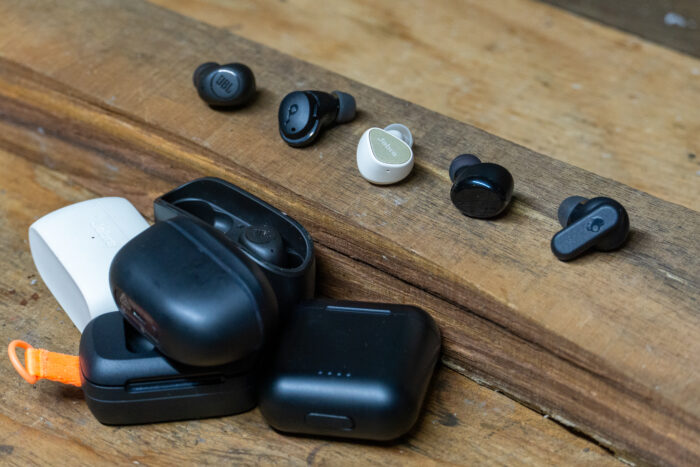
How We Tested Earbuds
Our Expert Testers
The GearJunkie testing system uses a mix of staffers and contributors to put the buds through their paces. Before we select which buds make our list to try, we sift through the industry to explore any newcomers into the space, watch for trends from key manufacturers, and then gather the latest in the world of budget wireless earbuds. Once all the buds are gathered, we get to the real work.
National journalist Tim Newcomb is on the wireless earbuds beat, having covered sports gear for over two decades for the likes of Sports Illustrated, TIME, Wired, Popular Mechanics and Forbes. His testing scenarios included everything from a ride down a Pacific Northwest singletrack and a running trail to plowing through an urban city street and a crowded gym.
GearJunkie Managing Editor Billy Brown has broken or lost hundreds of earbuds through the years, all in the name of journalism (and his absentmindedness). He tested earbuds at the gym, on the trail, and drowning out crying babies on countless airplanes.
Our Testing Process
We hit varying weather — Newcomb living in the Pacific Northwest ensures there’s ample time to test gear in the rain — and will even create scenarios to ensure the buds do what they say they do. We’ve been known to drop buds from second-story windows, hit the showers with them, and even toss them in the freezer for hours. All of these have real-world applications, especially if you live in a harsher climate. Over several days’ worth of ear time across a range of activities, we got a pretty clear idea of their strengths and weaknesses.
But since these are earbuds, sound quality matters too. We run them all through the same series of audio files gauging their clarity, bass response, and general audio quality. Armed with a range of songs recommended by Spotify for testing sound on headphones, we put every headphone through the paces to ensure the audio discussion comes from the same starting point.
Testing the best budget wireless earbuds is a combination of all these metrics. How does the audio perform? How do the materials hold up? What’s the fit and comfort like? How easy are they to use? They all add up to give us our range of the best options available.

Buyer’s Guide: How to Choose Affordable Earbuds
If you’re searching for a pair of reliable headphones for less than $50, there are a handful of key variables to keep in mind. Ultimately, you aren’t going to find high-performance options in this price range. Still, if you understand the basics of sound quality, battery life, and waterproofing, you can make an informed purchase and get the best bang for your buck.
Sound Quality
Like full-size speakers, earbuds distort different parts of the audio spectrum. No two pairs of earbuds will sound the same. While there are several objective factors that separate high-quality and low-quality sound, personal preference is perhaps the most important consideration. Some folks like a bassy sound balance, while others prefer a heavier treble.
Most of the earbuds on this list aren’t truly noise-canceling, save for the Anker Soundcore Life A3i Earbuds, which are certainly an outlier at this price point, and effective noise cancellation is typically a feature of more expensive options. Still, many users prefer to be able to hear their surroundings while listening to music or podcasts. Some earbuds on this list will simply muffle — but not cancel — outside noise, which comes in handy — especially in loud environments.
Ultimately, many users find that they do not need everyday earbuds with elite sound quality. For most users, a few sonic flaws are reasonable — especially if you want to spend $50 or less.

Understanding Driver Types
You’ll want to get to know coils when understanding the types of drivers used, especially in earbuds. A driver is basically the component that drives air. Listeners need the air to create pressure waves that can be heard by the human ear. Basically, a driver is the speaker function of a headphone or earbud. And like most technology, drivers come in different shapes, sizes, and styles.
The most common driver type is the dynamic driver. This style uses a coil and a magnet to turn electric current into air through a diaphragm. The idea is that as the electric current flows, the magnet allows the coil to regulate the diaphragm and move the air toward the ear. A dynamic driver is the most basic design, so it is often the least expensive, and does a good job of moving quite a bit of air, which can help produce good bass. It may distort at higher volumes, but choosing quality materials in construction can limit that downside.
A balanced armature driver is also sometimes used in small devices, most commonly hearing aids, but also earbuds. The armature is basically a tiny arm positioned between two magnets. When the electric current charges the magnets it moves the arm toward the diaphragm. That, in turn, produces the air movement and sound. The big advantage of this type of driver is the small size, but that also limits bass abilities, so isn’t as popular in earbuds as it is in hearing aids.
What Are EQ Profiles?
An EQ profile — EQ really just stands for equalization — offers up a way to personalize the way you hear your music. Equalization gives each user the chance to tweak the frequency ranges of the audio output, allowing the user to adjust these ranges to fit their personal desires.
Typically found within the app functionality of a Bluetooth earbud, companies tout the EQ options to better individualize the sound experience. You’ll want to personalize your EQ settings based on the type of music you enjoy — or if you just like certain ranges of sound. Each app will have its own way of allowing you to adjust, but typically you can bolster the low end to accentuate bass, the high end for the melody, and the mid-range for the vocals. You may want to think about if you’re heavy on techno music — boost the low and high ends for a good balance — or typically are listening to movies or other audio heavy on vocals — for that you’ll want a heavy dose of the mid-range.
Bluetooth Codecs
You can’t listen to music if your wireless earbuds can’t connect. Not only does the driver control the sound quality and the EQ profile differentiate your listening preferences, but Bluetooth codecs define how well your earbuds perform.
Bluetooth is the way your wireless earbuds receive data from your mobile device. The better the Bluetooth quality, the quicker the earbud receives and processes data for a fuller audio experience. Typically, the SBC is the basic version of a codec, with the lowest rate of data transfer. That translates into basic sound quality. AAC for Apple and AptX on Android offer more data transferred, which equates to better sound quality.
Battery Life and Charging
Like all wireless devices, earbuds need to be charged from time to time. When you’re in the middle of a flight or bike ride, you certainly don’t want your headphones to suddenly die. For this reason, it’s worth seeking headphones with reasonable battery life and a quality charging case.
The battery life of headphones depends on various factors including surrounding air temperature and audio volume. To get the maximum life out of your fully charged headphones, keep the volume in the low to mid-range.
In 2025, a good pair of affordable earbuds may last up to 5 or 6 hours on a single charge. In our experience, earbuds tend to die a little sooner than the manufacturer claims. Most pairs come with a nifty charging case that allows you to juice up the headphones on the go. Most fully charged cases will charge the earbuds 2-5 times before they need to be plugged into an outlet.

Button Navigation
Buttons matter. But it can be a touchy subject. Earbuds have limited real estate in which to work, forcing companies to think about how much functionality they want multi-function buttons to play on an earbud. But first, they must decide if they are going to include a physical button or a capacitive touch-only button.
The physical button is more basic and offers key elements, such as a clear response on whether it has been pressed and the ability to press it with gloves on or if hands are sweaty, dirty, or wet. Some folks may not like the force a physical button on an earbud requires as it may press the bud deeper into the ear. Plus, the mechanical clicking noise a pressed button makes isn’t for everyone. But on the upside, you know what you’re getting each time.
The touch-style button generally brings in more features, allowing users to swipe for differing actions. For example, users may swipe in varying directions to control volume and then in another direction to enable other features. But the touch-style button has a learning curve and does require a clean finger.
Deciding on the type of button may dictate what features are available via the earbud without having to reach for the phone. Even with the physical touch button, you can get differing actions by adding multiple button presses, whether on the same earbud or having buttons on the right and the left. Companies also tend to make the buttons multi-functional, meaning the number of rapid clicks each serves a different function.
How much control you want from your earbud alone is dictated by how the manufacturer approaches button navigation.
Call Quality
Most high-quality workout headphones are able to accept and manage quick phone calls. A built-in microphone, user-friendly controls, and decent sound quality are essential for taking calls via your headphones.
These days, dual and quad mic technology has dramatically improved call quality — even on cheap earbuds.
However, if you plan to use your ‘buds for long work calls, a $20 pair might not be the best choice.

Waterproofing and Durability
If you’re going to be wearing earbuds while working out, durability and a reasonable degree of water resistance are crucial. If your exercise regimen includes outdoor activities such as running, cycling, or rowing, we recommend earbuds with a solid waterproof rating. Even if you don’t plan on being out in the rain, it’s wise to be prepared.
Though all of the headphones on this list are fairly durable, some will withstand wear and tear better than others. Though cheap earbuds are easy on the wallet, there is certainly a relationship between price and build quality.
In order to handle the inevitable perspiration that occurs during exercise, earbuds need to be reasonably water-resistant. Many options come with a water resistance IP rating that serves as a helpful guide.
Basically, headphones exist on a spectrum from IPX1 to IPX9. IPX1 headphones should be able to handle sweat and occasional small drops of light rain. IPX9 headphones can withstand a direct stream of hot water from a pressure nozzle. The IPX rating system can feel a little confusing, and we recommend you don’t think too hard about it.
Simply put, headphones with any IPX rating should be able to handle the demands of any dry-land form of exercise. If you plan to use your earbuds in wet environments — like a scullboat or a paddleboard — we recommend a higher IPX rating.
Price & Value
Budget
When your price point for wireless earbuds is under $50, it’s safe to say that you’re shopping entirely in the budget category. But as we tested, we found that wireless earbuds below $50 do have some differences. The least expensive buds that we could find that were worth a damn were the JLab Go Air True Wireless Earbuds ($30) and the Skullcandy Dime 3 Earbuds ($30). These buds both put out respectable sound quality, came with their own charging cases, and the Go Air even has different EQ Modes.
These don’t have the sound quality of $40 or $50 earbuds, and they occasionally had trouble connecting to our phones’ Bluetooth, but for $30, you could do a lot worse.
Mid-Tier
For an extra $10, you can Tribit FlyBuds 3 Wireless Earbuds ($40), which offers excellent audio when you crank up the volume and comes with the most reliable tap-touch setup that we tested. As a bonus, the case doubles as a power bank, which is a fun feature that we didn’t expect to see in this price range.
Premium
Most of the earbuds we tested sat at the very top of our price range with $50 price tags. For the extra money, you get consistently good sound, a more secure and comfortable fit, and, in the case of the Anker Soundcore Life A3i Earbuds ($50), functional active noise canceling, which was a very pleasant surprise in a $50 pair of earbuds.
Frequently Asked Questions
Though we recommend all of the earbuds on this list, the Soundcore Life A3i earbuds are our pick for the best overall set for $50 or less.
Not all earbuds are waterproof, and some are more water-resistant than others.
Most bluetooth earbuds come with a water-resistance rating from IPX1 to IPX9. IPX1 earbuds can generally withstand moisture from sweat but not much more. If you’re going to be exposing your earbuds to wet and rainy conditions, look for a pair with a strong rating of around IPX4 or higher.
Runners need earbuds that fit well and don’t fall out. Because people have different ear shapes, the process of identifying a good pair may require some trial and error.
If you plan to run on the streets or in a public setting, we recommend a pair of streamlined earbuds that won’t stick out and still allow you to maintain situational awareness.

The Best Workout Headphones of 2025
We tested the best workout headphones of 2025 with options for every budget and athlete. Top picks include Jaybird, Bose, and more!

The Best Bone Conduction Headphones of 2025
Rock out to your playlist while staying aware of your surroundings. These are the best bone conduction headphones of 2025.
